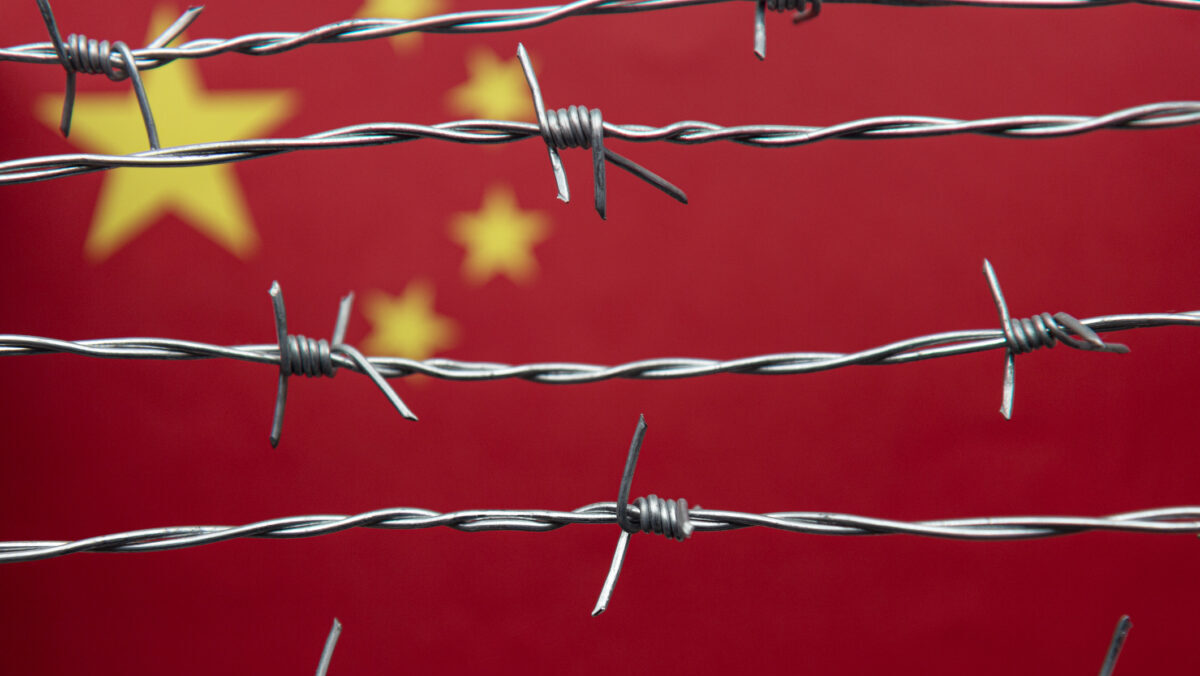Why Shaw thinks graphite stocks are a buy as China’s export ban spooks EV market

Pic: kemalbas/iStock via Getty Images
- Beaten graphite stocks see glimmer of hope as Chinese export restrictions raise hope for higher prices
- Shaw and Partners analyst Peter Kormendy says prices will have to rise to incentivise new mines
- Under business as usual, China will own more than 90% of the anode market until at least 2035
Graphite stocks have been down on the canvas throughout 2023, threatening to become the never was of the first wave EV investment boom.
While lithium miners have seen astonishing runs as prices hit record highs in 2022 and since depressed nickel, cobalt and copper have all seen their day in the sun, graphite has struggled to fire.
It’s confusing given graphite — used in the anode in EV and other lithium ion batteries — makes up more of the metal content of a battery than any other commodity.
A complicated material, natural graphite is not only sold in a variety of different products and grades for different end markets, it also faces competition from synthetic sources of the material made from carbonaceous products like petroleum and coal.
The type of graphite commonly quoted as a bellwether for the graphite heading into batteries is 94-95% carbon -100 mesh flake graphite. That rose steadily in 2022 but has fallen sharply in 2023, fetching US$563/t at the start of October according to Benchmark Mineral Intelligence, down around 31% this year.
Benchmark’s graphite index is down 29.3% YTD, and that’s without experiencing the extraordinary highs other battery metals saw last year.
To top it off, the supply chain is so heavily concentrated in China that the world’s biggest producer has extraordinary control over the key EV metal, and rising supply of natural and synthetic graphite for anode materials has been a big driver of price suppression this year.
But, lo and behold, those same fears had graphite miners, developers and explorers surging last week after reports emerged China planned to place export controls on graphite products used in EV batteries.
That has the potential to see anode material and flake graphite prices catch a break as non-Chinese battery producers stockpile material ahead of a December 1 deadline for restrictions to begin, BMI says.
How did ASX stocks respond?
The ASX’s best known graphite stock Syrah Resources (ASX:SYR), which has been operating its Balama natural graphite mine in Mozambique on a campaign basis due to low prices, is down 65% YTD.
But the $473 million company has seen its shares surge 52% since October 19.
Black Rock Mining (ASX:BKT) is up 22%, Walkabout Resources (ASX:WKT) 9%, Talga Group (ASX:TLG) 12%, Australian focused Renascor (ASX:RNU) up 45%, Lithium Energy (ASX:LEL) up 10%, and Evion Group (ASX:EVG) and International Graphite (ASX:IG6) unchanged.
According to BMI, China is responsible for close to 70% of global natural and synthetic graphite supply and over 90% of the anode material used in batteries. Even with moves to expand output in the West, it could keep close to its current market share until 2035.
That’s with a market growing roughly 10x over.
China and #graphite
This sums up the main issue the rest of the world faces with graphite and anode material.
There is a lot of anode capacity planned but hardly any for the rest of the world.
2023: China dominates with 93%
2035: China dominates with 90%
The issue… pic.twitter.com/hnypJOUd5D
— Simon Moores (@sdmoores) October 21, 2023
Syrah’s Vidalia anode materials plant in Louisiana — initial capacity 11,250tpa and eventual output 45,000tpa — is the first commercial facility to enter construction in the United States, supplying customers like Elon Musk’s Tesla and supported by Biden Administration grants and finance.
Shaw and Partners senior resource analyst Peter Kormendy told Stockhead last week it’s a drop in the ocean.
“In 2025, Vidalia represents 2% of the market and in 2030 Vidalia at that expanded rate will still only be 4% on the market,” he said, quoting BMI research included in the latest Syrah presentation.
“And that’s just based on those Gigafactories that are currently in production (or announced) on that left hand side of the page.”
What impact will it have?
The restrictions are the latest in a tit for tat trade war that included Western restrictions on semiconductors exports to China and halts of gallium and germanium products from the Middle Kingdom.
Kormendy said it was still too early to say exactly what the nature of the Chinese export restrictions will be.
Equally the graphite market is complicated by the fact prices for products used in other less prominent industrial markets have held up more than the fines typically sold into the battery space.
“There’s probably another 10 or 12 graphite products. Five or six are more widely traded for industrial use and those prices have largely held up so that’s stayed at about US$1,000 a tonne, they haven’t moved,” he said.
“So the fines price has come back but the rest of the graphite complex has actually held up really well, which is a point that’s lost in the market because Syrah (which produces fines) is such a bellwether for everything in this space.
“In terms of my expectations, I definitely expect the (fines) price to have to move up.
“There’s an incentive price to bring new projects into production and it isn’t the current price. Price has to move up in order for there to be new production to be brought to the market.
“And events like last Friday, they hasten those impacts so I think we probably see them quicker than what we were previously thinking about.”
Three buys
In a note last week Kormendy reiterated his buy recommendations across the sector, with a $1.30 price target on Syrah, 72c target on Evolution Energy Minerals (ASX:EV1), 84% owner of the Chilalo project in Tanzania, and 46c target on Black Rock Mining, which owns 84% of the Mahenge project, also in Tanzania.
“(Syrah) probably just need a slightly higher price to be sustained for them to turn it into more of a continuous production type cycle. They’re closest to that in that they don’t need a lot (to ramp up),” Kormendy said.
While Balama is an operating mine, Black Rock is yet to enter production at Mahenge, which could produce up to 340,000tpa of graphite concentrate for over 25 years according to a feasibility study.
But it has serious weight behind it in future offtake partner POSCO, the largest battery producer outside China. Kormendy said the South Korean conglomerate need ‘three or four Black Rocks’ to feed their stated battery anode material targets by 2030.
“Who knows but they’re possibly faced with a situation where they don’t have any raw material to process if China bans the export of that intermediate product,” he said.
“We have to wait to see what happens and I’m not a POSCO analyst but it’s possible they spend the next five weeks amassing inventory in order to see them through.”
Depending on the severity of the Chinese restrictions it could mean producers like POSCO need to incentivise projects like Mahenge to come online quicker.
Evolution meanwhile has the world’s biggest anode material manufacturer BTR New Material Group on its register, with the Chinese firm currently looking into opportunities to expand into North America.
Dream come true?
Black Rock MD John de Vries said the ban appeared to be a ‘dream come true’ for some graphite plays. Companies that have an offtake arrangement outside China and a pathway to qualification will be well placed he told Stockhead via email.
“Graphite’s performance is a function of its crystal structure. The current process is for a new brand of graphite or indeed a new facility to go through a process of qualification to validate product performance,” he said.
“This is timely and expensive, in our case it has taken four years to qualify with POSCO. The process included running a whole of deposit bulk sample for 500 tonnes to validate the deposit.”
That process is a handbrake uncommon in other commodity markets, which means a far slower pace to market than what is urgently needed if China really turns off the taps.
De Vries thinks the news suggests prices should ‘rise and rise sharply’, though the dominance of China in price indices poses an issue for price discovery. As Chinese exporters have to turn inward to offload product, heightened domestic competition could spur discounting.
“The burning platform here is to develop an ex-China pricing model that reflects true market balance,” he said.
“I think the immediate reality is that prices will rise and rise quickly for qualified material, but these prices will be initially not be observable in the market.”
The other questions is which graphite stocks will do best out of the coming supply crunch — the pure play miners or the integrated anode materials players, who currently draw higher valuations.
“Remember, when the iron ore price boom hit, it was the miners who made off like bandits, not the steel mills,” de Vries said.
“This does highlight an issue with those players who are developing their own facilities such as Syrah and Talga. They will do very well in the short term but as we are seeing with lithium, as refining capacity catches up with demand, success is more related to the quality of the deposit as opposed to going into downstream manufacturing.”
Related Topics

UNLOCK INSIGHTS
Discover the untold stories of emerging ASX stocks.
Daily news and expert analysis, it's free to subscribe.
By proceeding, you confirm you understand that we handle personal information in accordance with our Privacy Policy.








